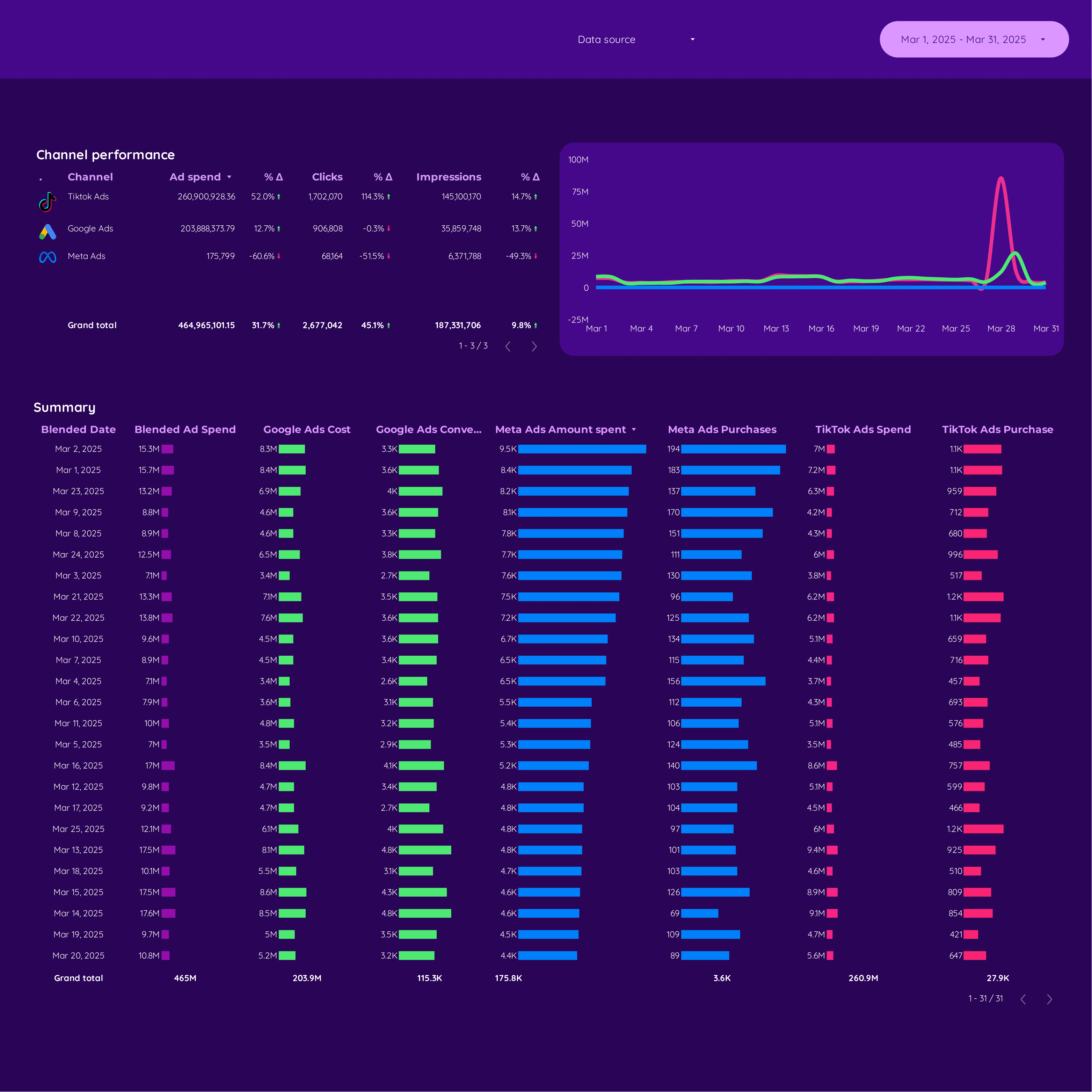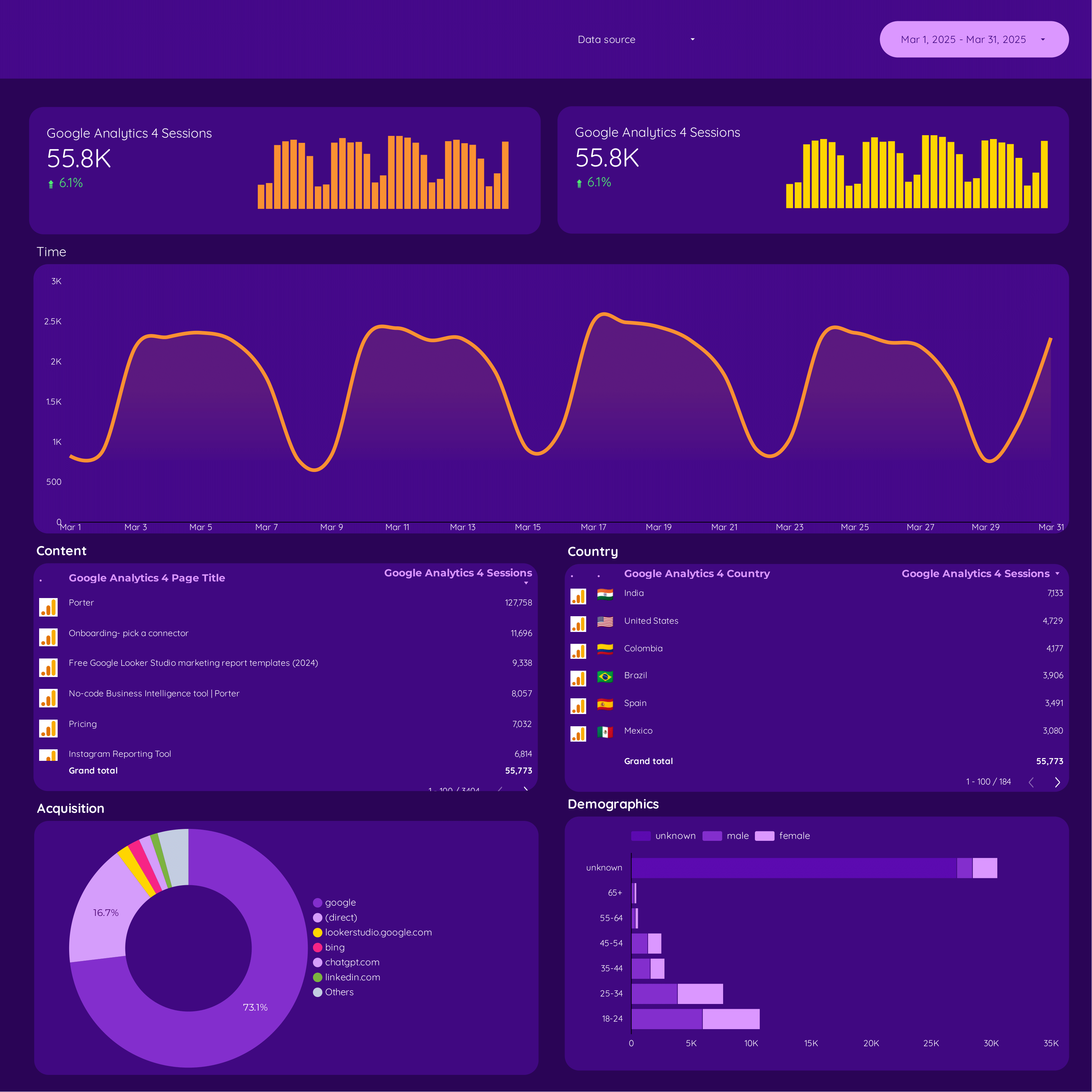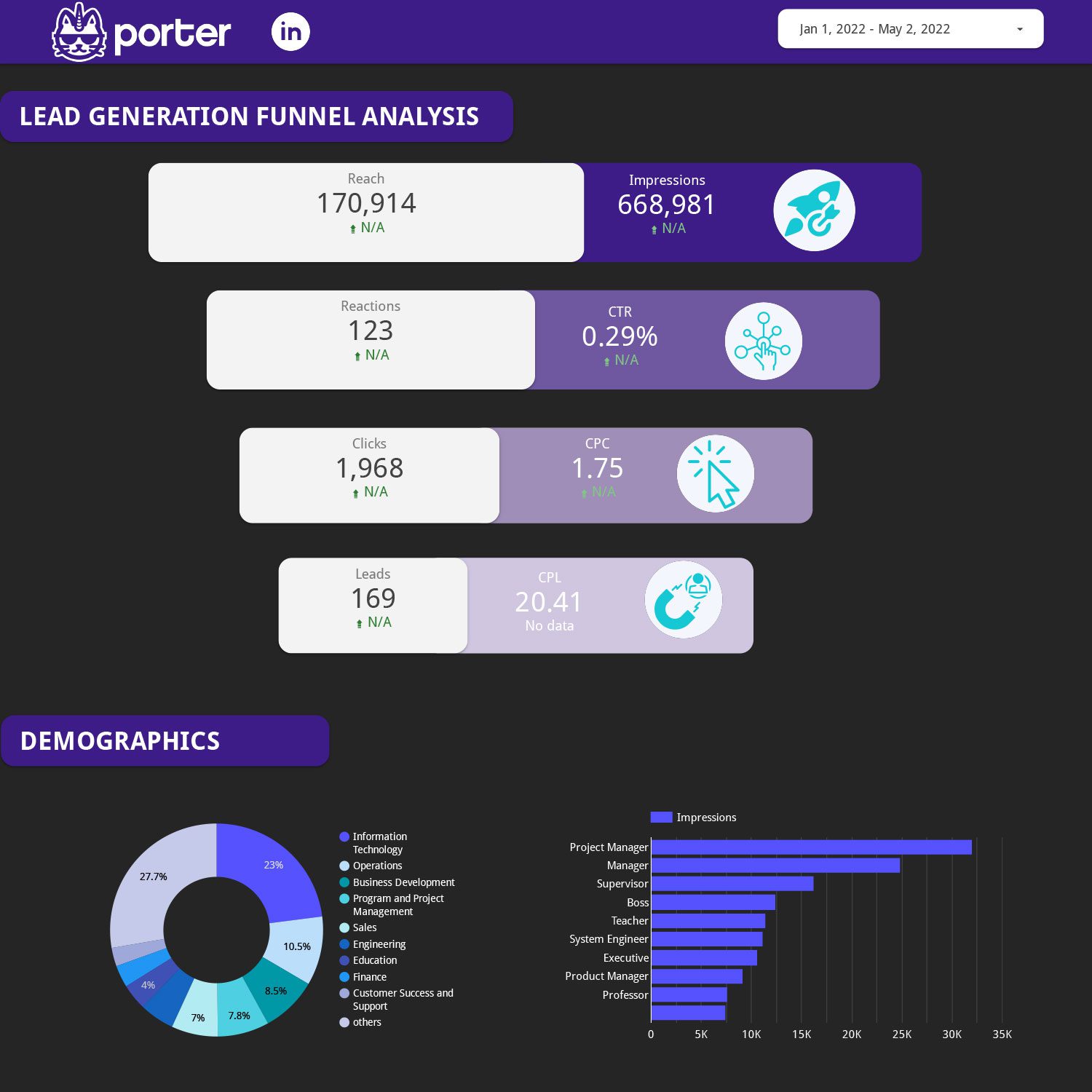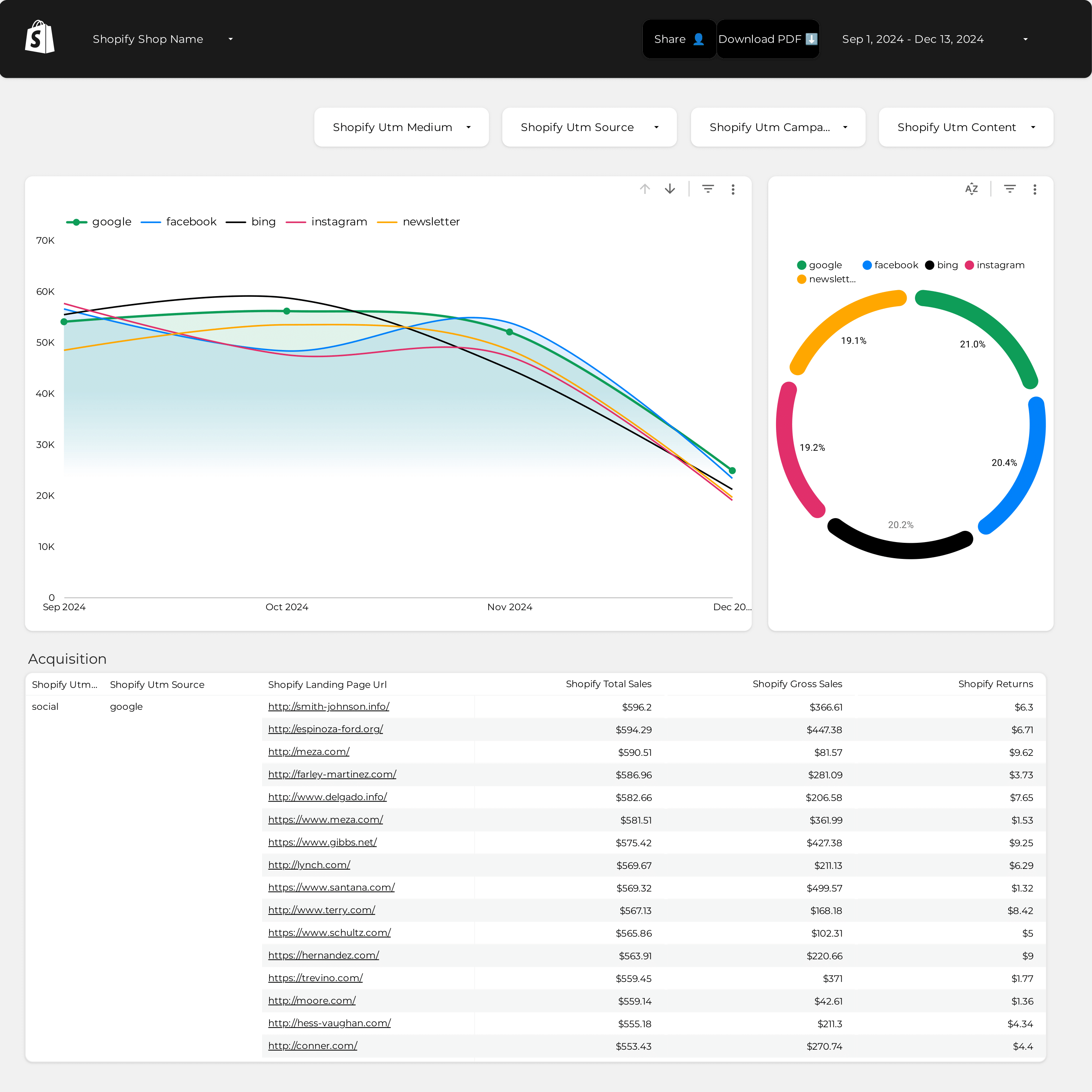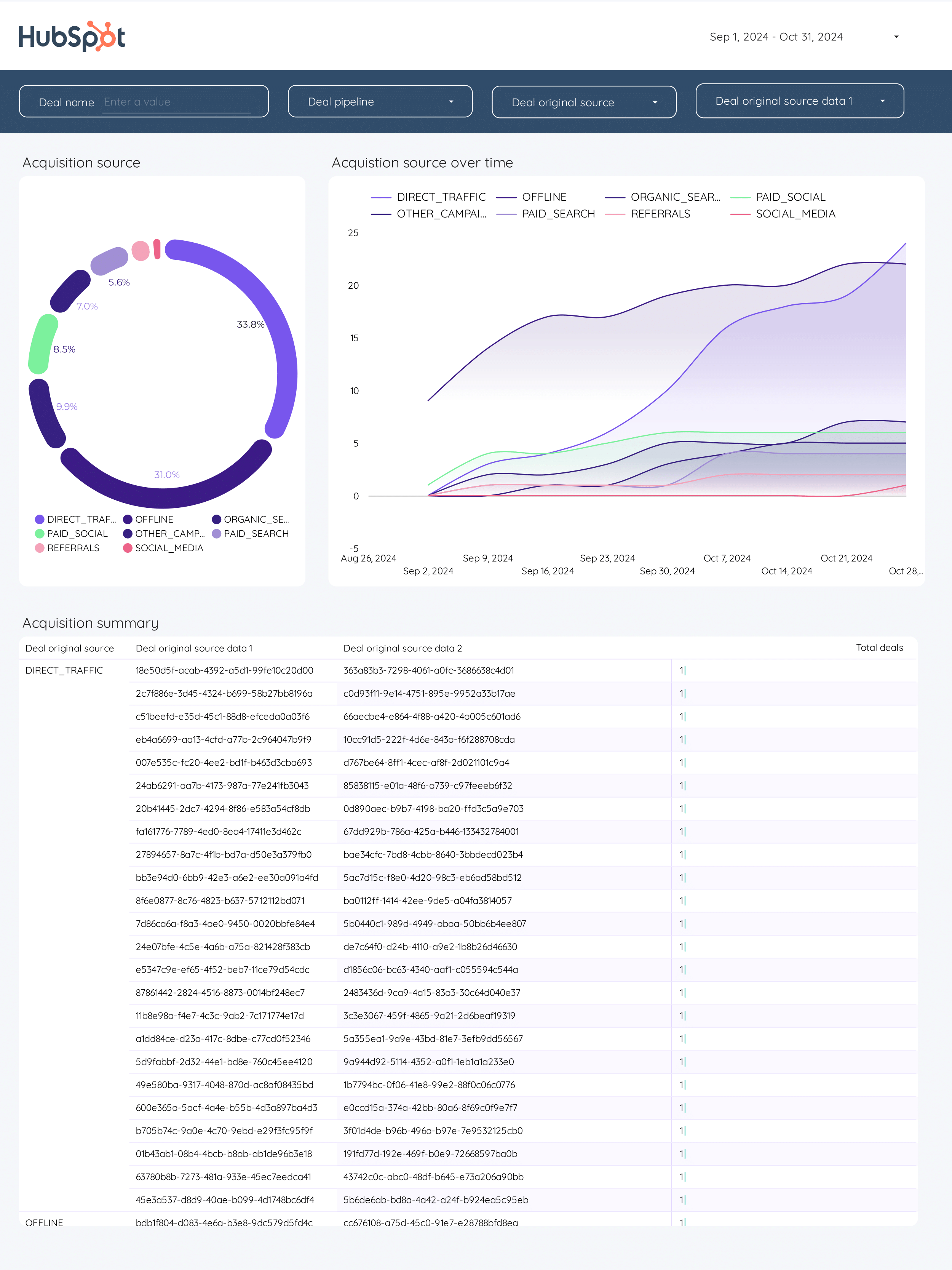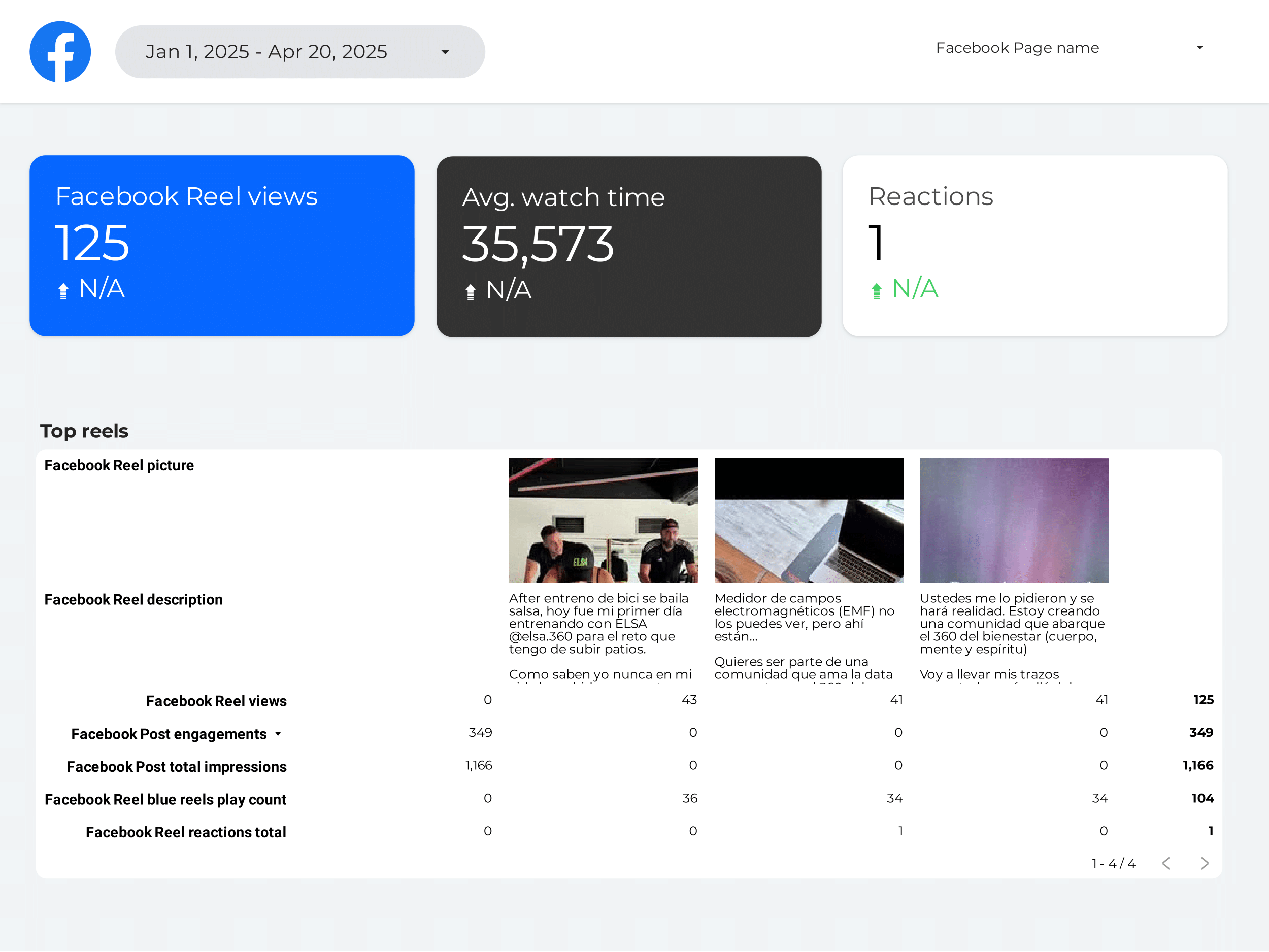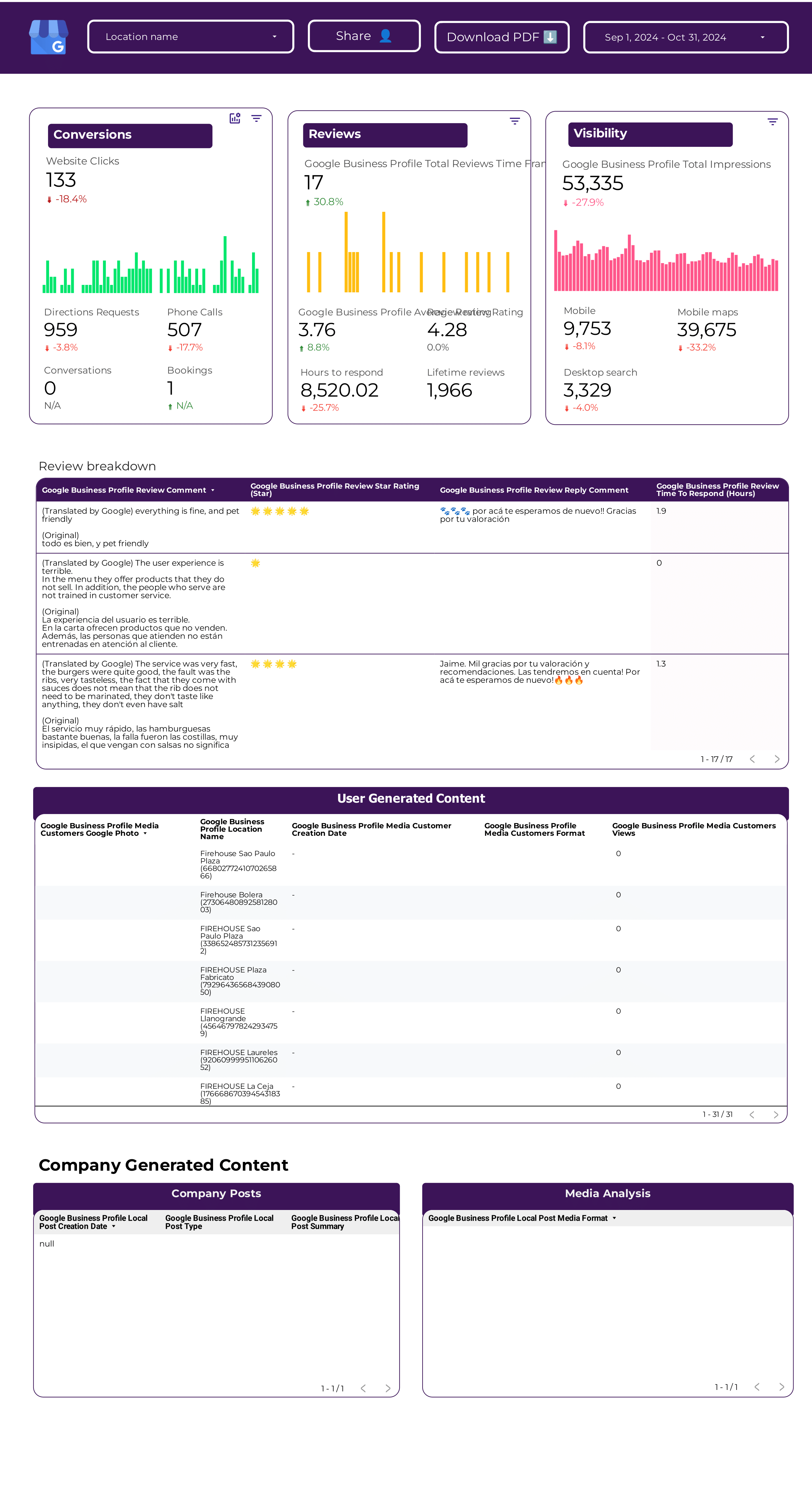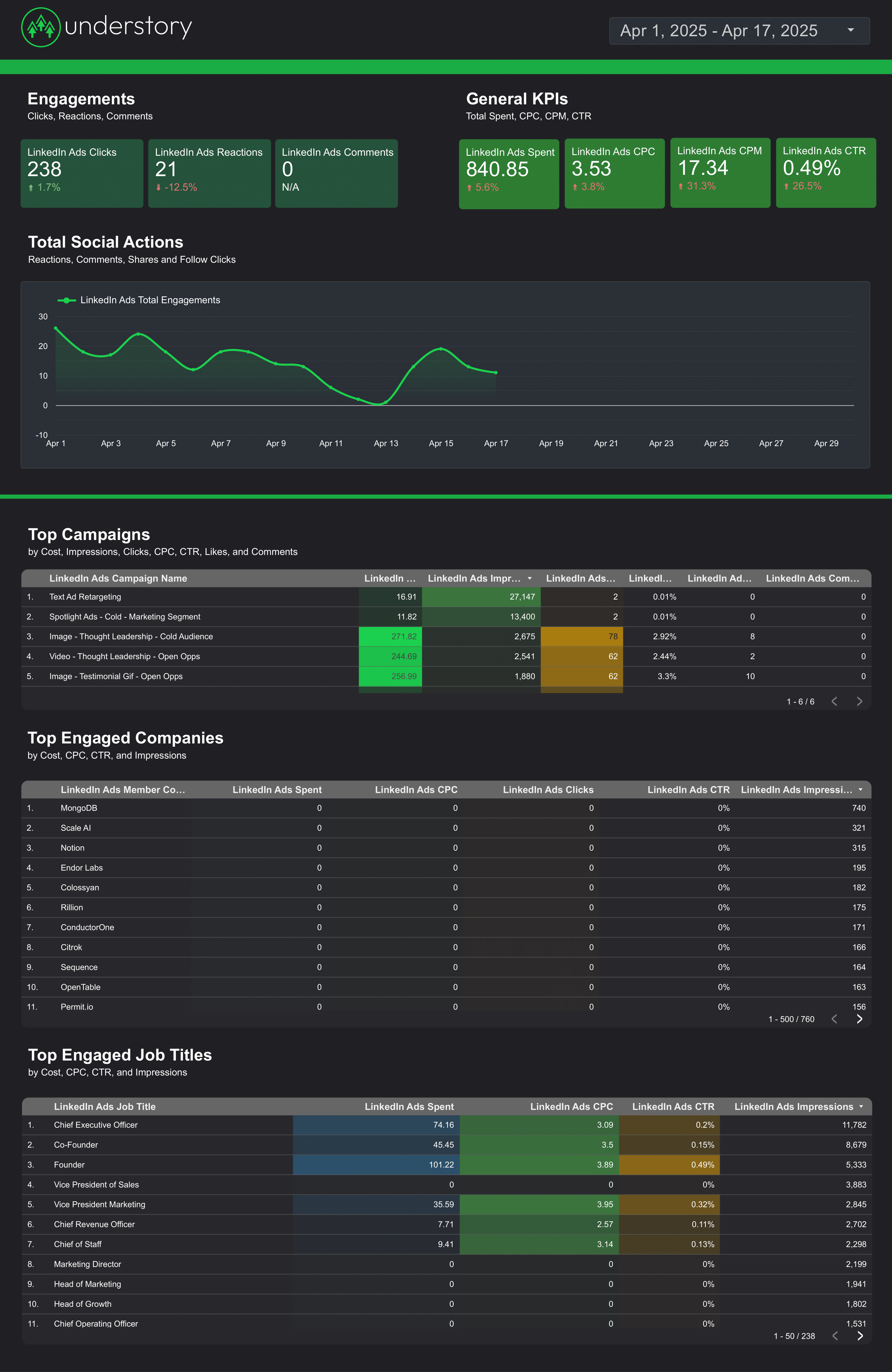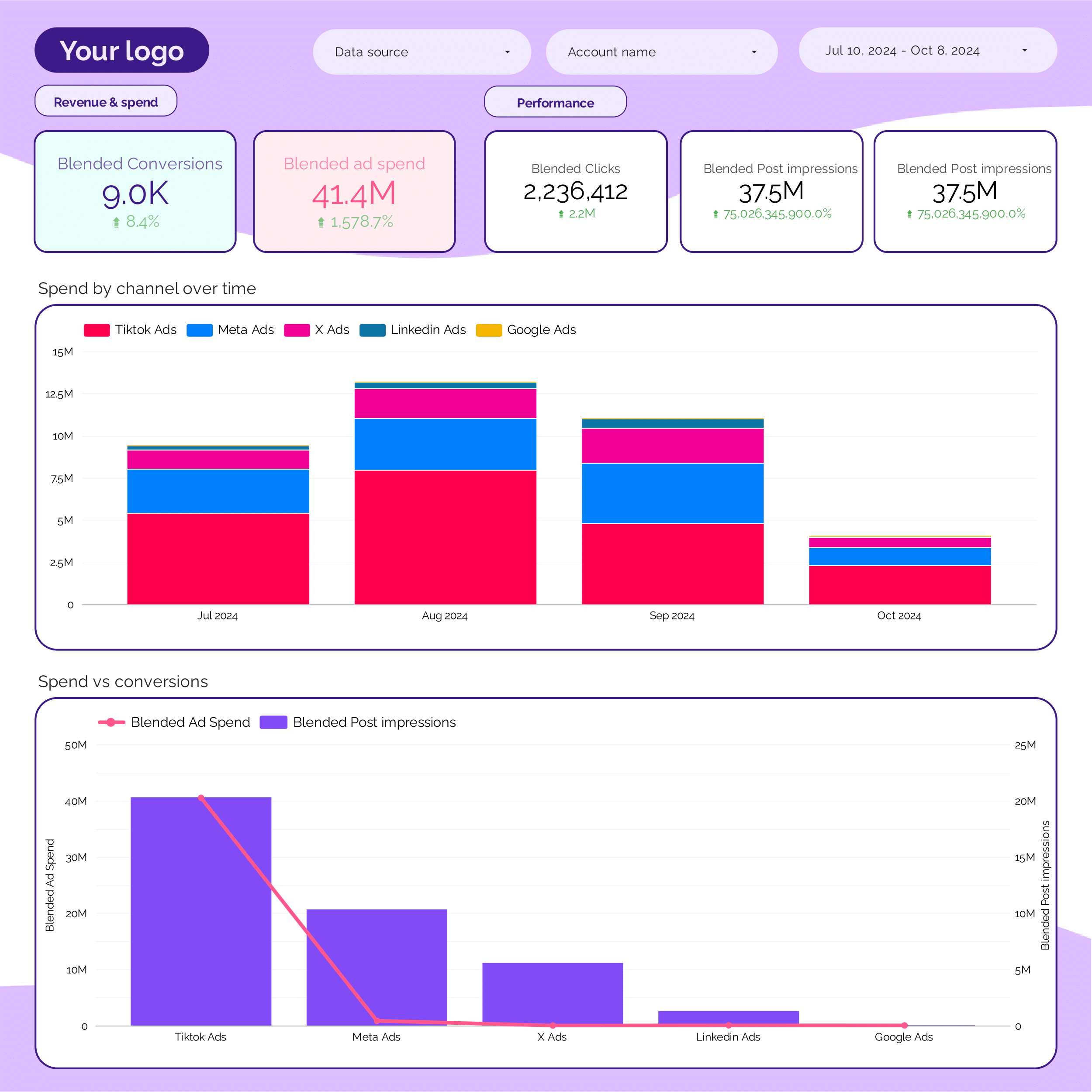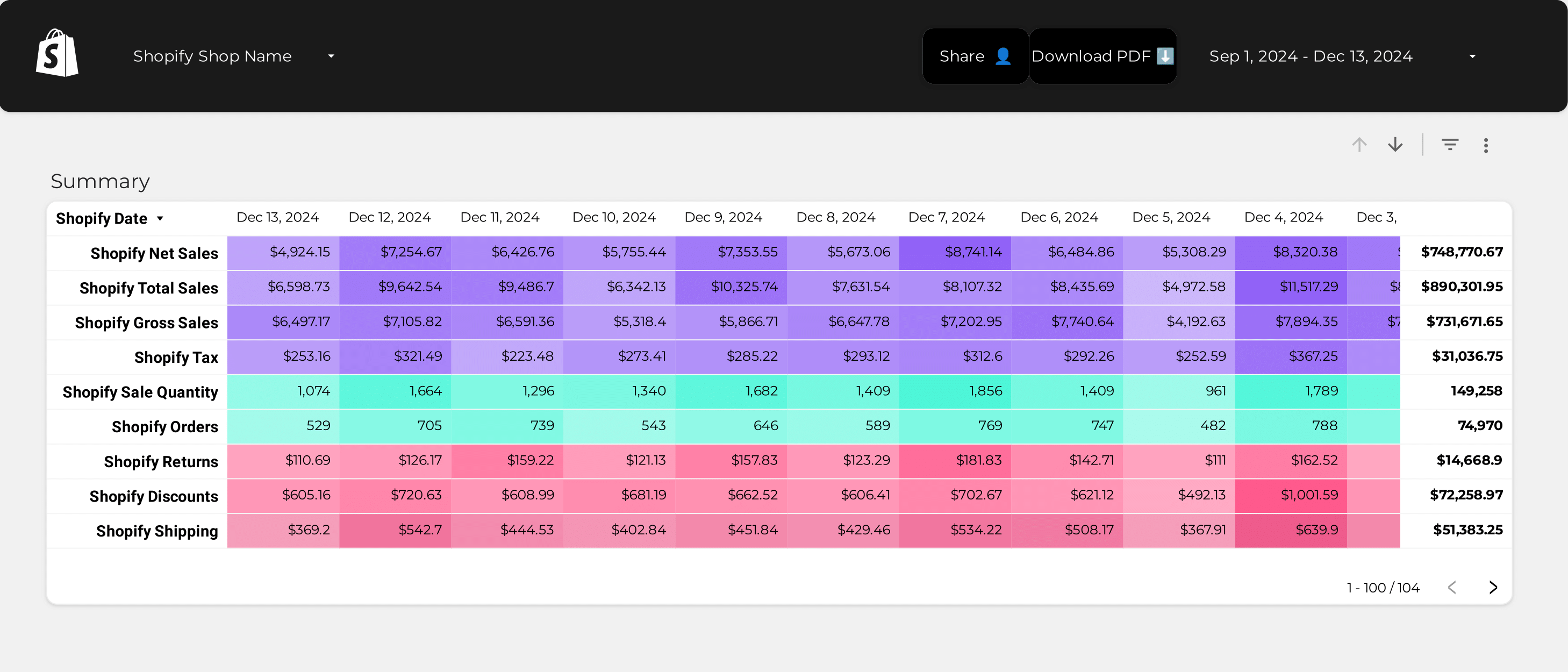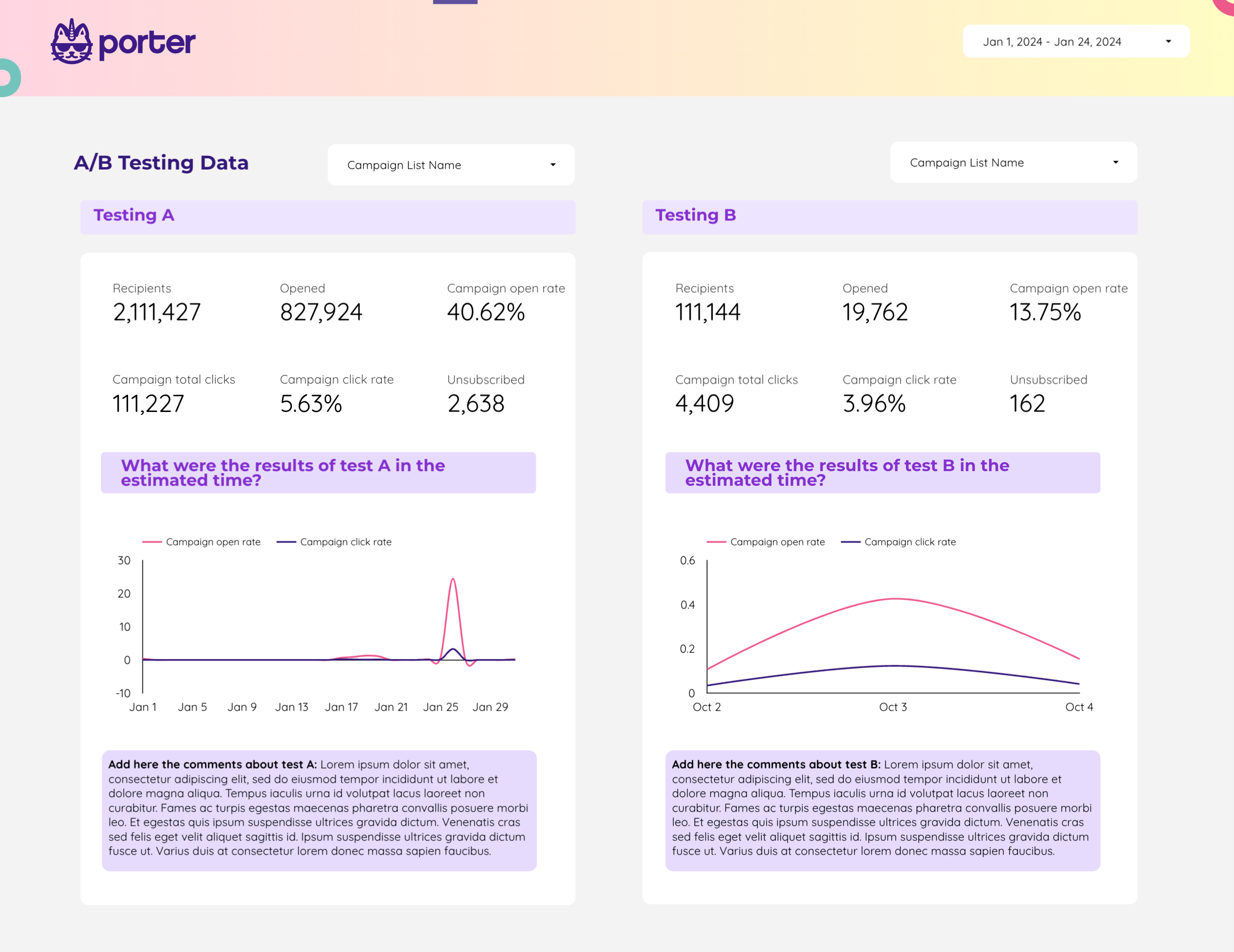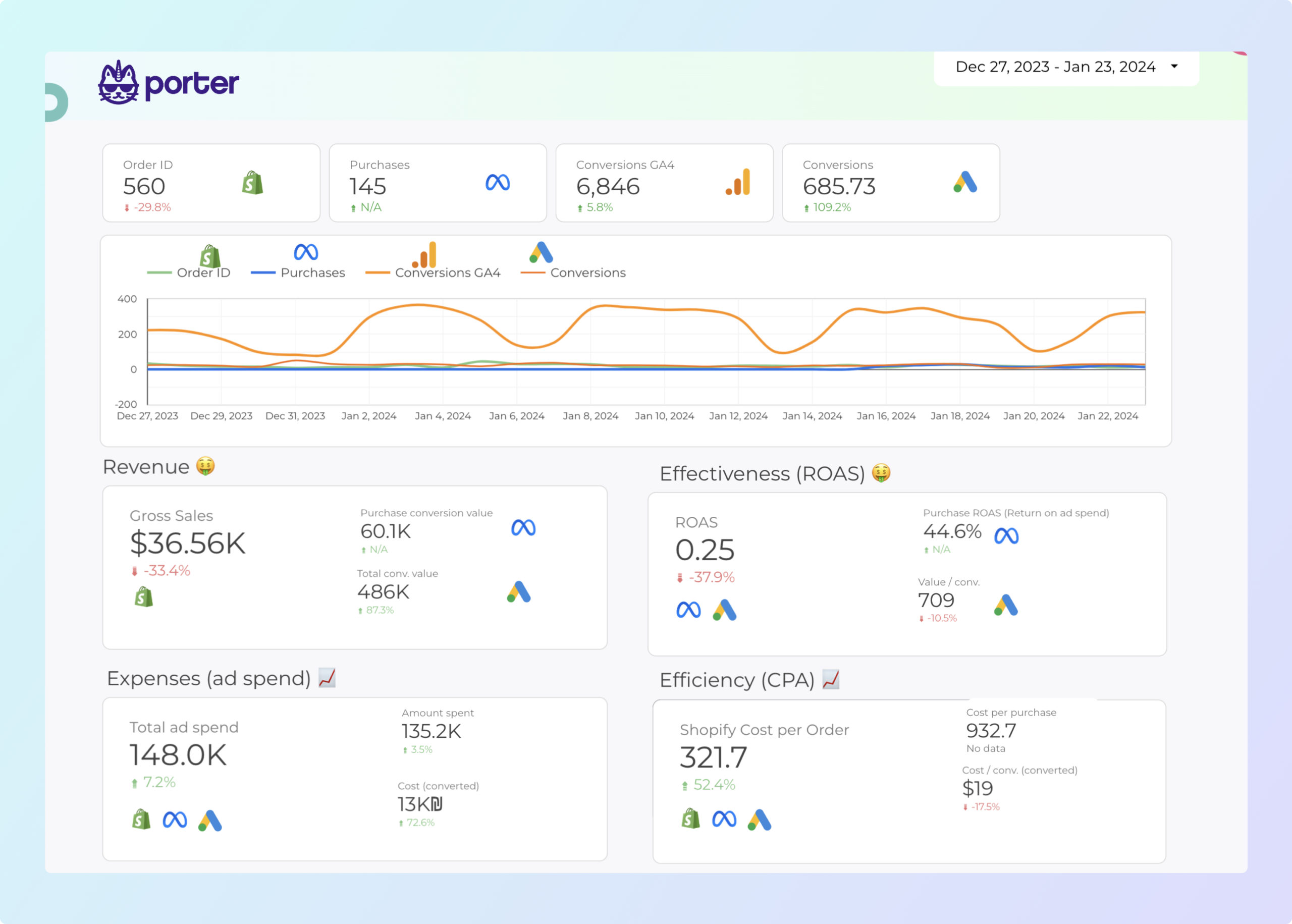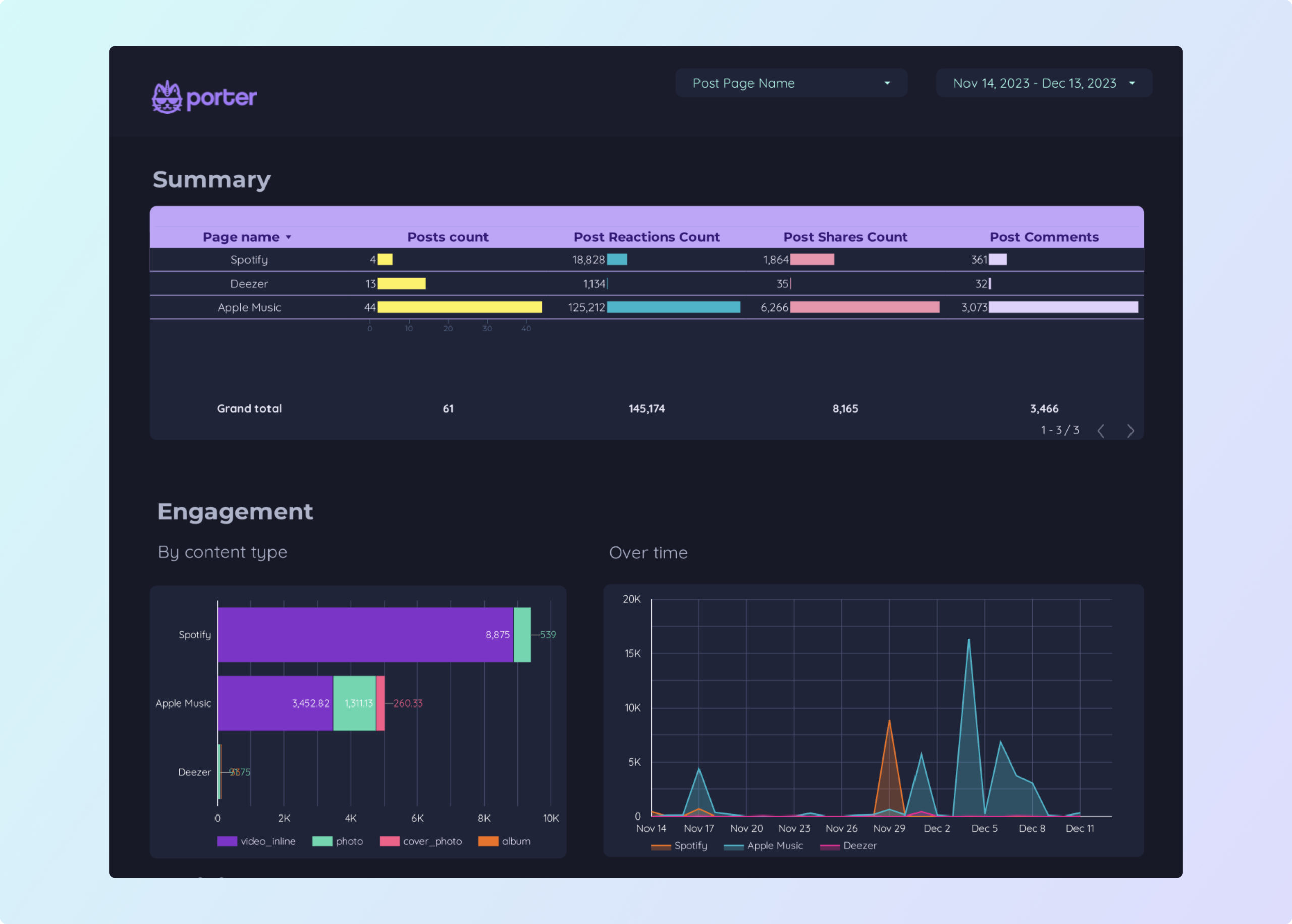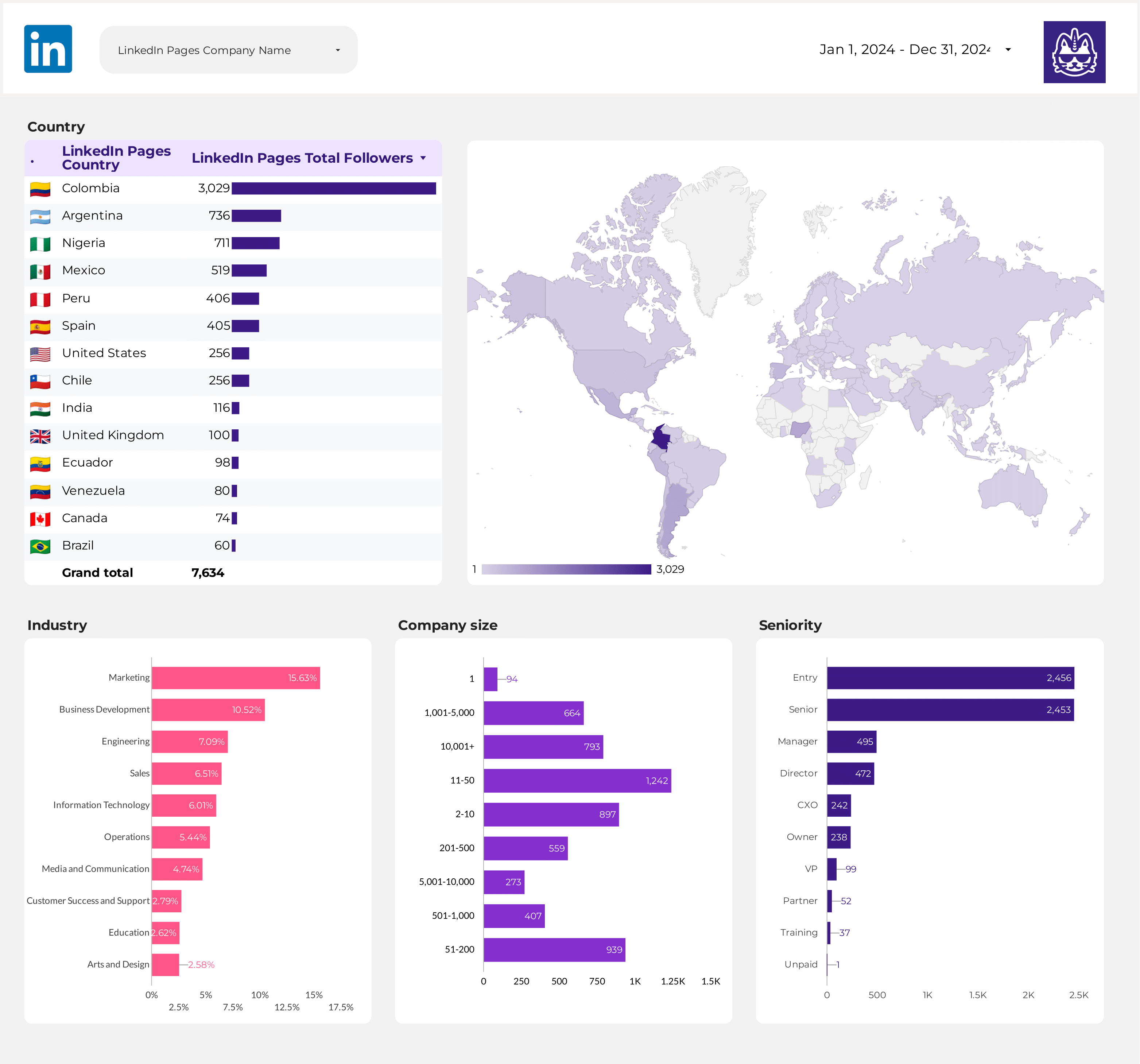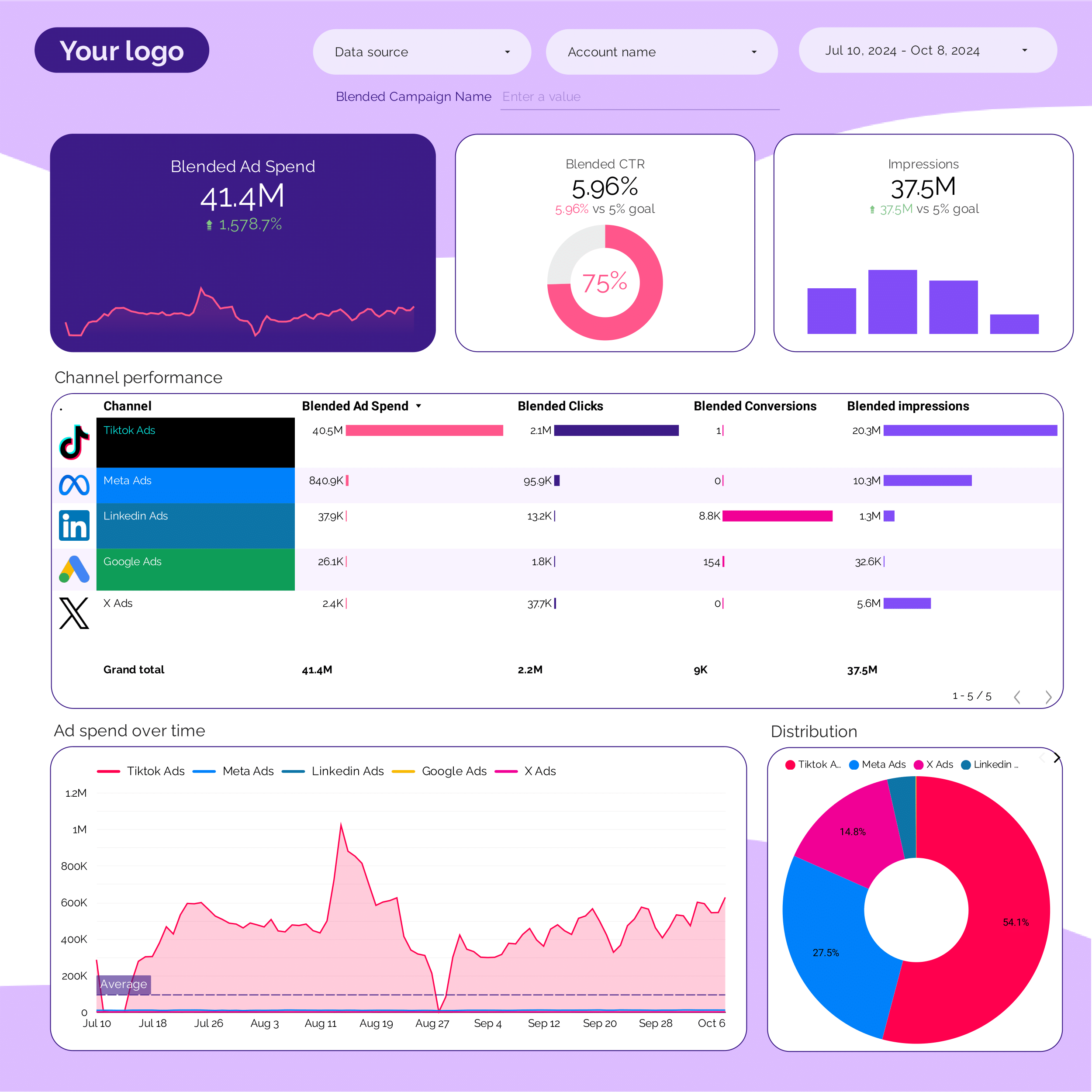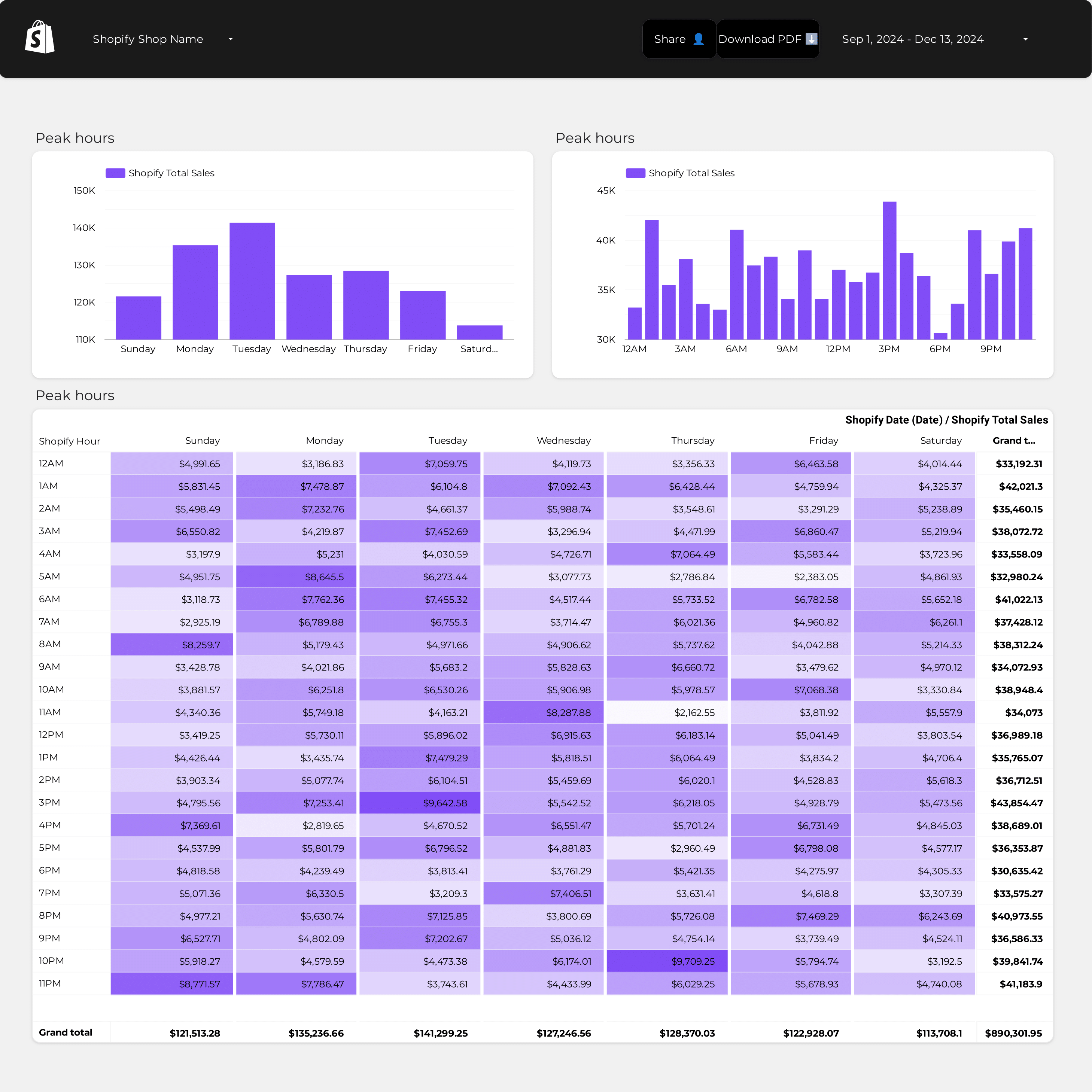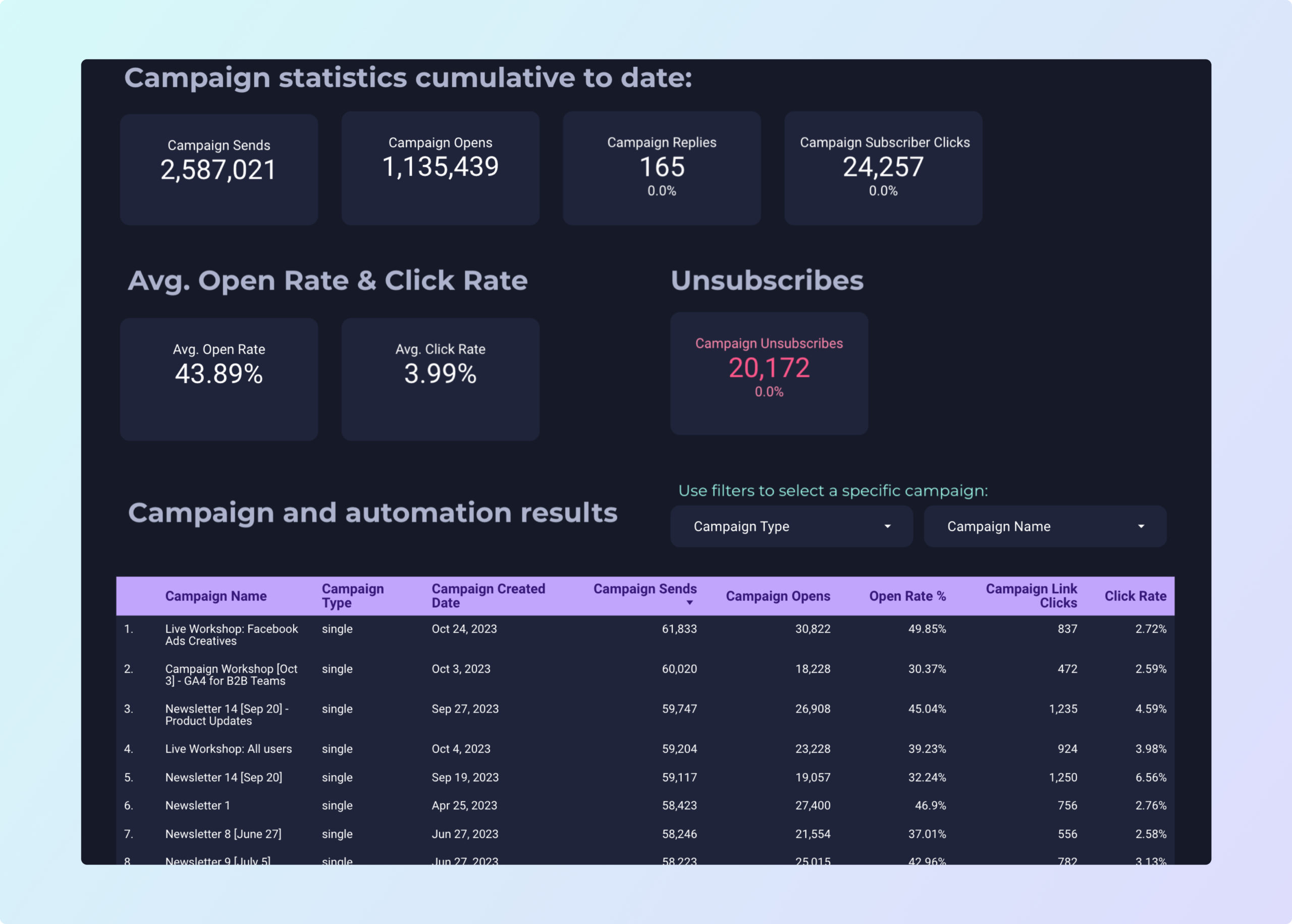What is a keyword performance report?
A keyword performance report is a document that consolidates data from multiple sources (e.g., Google Search Console, SEMrush, Ahrefs) to track and display key performance indicators (KPIs) (e.g., keyword rankings, search volume, click-through rate), enabling teams and agencies to monitor keyword performance and create presentations for clients and executives.
Keyword performance reports are typically created using flexible tools like Google Looker Studio, Power BI, Google Sheets, or platform-specific solutions to enable high customization and integration of multiple data sources.
What to include in a keyword performance report?
An actionable keyword performance report balances context and specificity based on the audience (executives, managers, and analysts) and their use cases.
Executive keyword performance reports
Executive reports for CMOs, CEOs, and clients show the impact of keyword strategies on business goals. Reviewed weekly, monthly, or quarterly, they include:
- Keyword ROI analysis: by channel, using attribution for large budgets.
- Traffic analysis: organic traffic growth from targeted keywords
- Cohort analysis: keyword performance by cohort (time period, content type)
- Add text for additional context to translate metrics for non-technical audiences. Present in slide decks and simplified Looker Studio reports.
Keyword manager reports
Manager reports have cross-channel views with drill-downs to see performance by keyword, region, team member, and campaign. They help align teams, define tactics, and include:
- Cross-channel reporting: overall keyword performance across search engines
- Goal tracking: compare current keyword performance vs objectives
- Audits for prioritization and spotting issues
- Competitive analysis for keyword and tactic mapping
- Topic, keyword, content, audience research
Operational Keyword Performance Reports
Operational reports for analysts and SEO managers have granular, customizable KPIs to solve technical issues. Monitored hourly, daily, or weekly, they cover:
- SEO: keyword rankings, impressions, clicks, page speed, errors, backlinks
- Content: performance metrics for keyword-targeted content
- Technical SEO: site health, crawl errors, indexation issues
Operational keyword performance reports are highly customized, built in flexible tools like Google Sheets or Looker Studio to enable data cleaning, blending, annotations, and integrating multiple sources.
How to build a keyword performance report?
To build a keyword performance report, connect your data sources, choose a template on Looker Studio or Sheets, build your queries by selecting metrics and dimensions, choose charts to visualize your data, customize the report, design and share via link, PDF or email.
Here’s the breakdown:
Connect data sources
Define and connect the data sources to bring to your report. Common sources are Google Search Console for keyword data, SEMrush or Ahrefs for competitive analysis, and Google Analytics for traffic data.
To connect your data sources, go to portermetrics.com, choose the data sources to bring to your report.
You can follow these tutorials on connecting your data:
Choose a template
Choose from dozens of keyword performance report templates in Google Sheets or Looker Studio, designed for use cases like keyword tracking, competitive analysis, and content performance.
Learn to copy Looker Studio templates.
While templates are the starting point. Make them specific for your business or agency. Map your specific metrics, especially custom keyword conversions, search data, and all the fields and metrics that you define as "conversions" and "revenue".
Depending on your reporting tool—Google Sheets or Google Looker Studio, pick any of the dozens of templates created by our team and customers to solve your keyword performance reporting use cases, such as keyword tracking, competitive analysis, and content performance.
Select metrics, dimensions, and charts
Once your report template is downloaded, you may 1)modify it or 2) create a blank page to build it from scratch. Whatever the case, setting up a query always follows these steps:
- Select the data source and the account connected to it
- Choose metrics (e.g. Impressions, clicks, CTR, keyword rankings, etc.).
- Choose breakdowns to segment your data (e.g. by date, keyword, page, etc.)
You can follow these tutorials on adding data to your reports
Design
To make your keyword performance reports truly white-label you can add logos, colors, fonts, and styling to mirror your brand.
Follow these tutorials to design your keyword performance reports:
Share
Share your keyword performance reports via links, PDF, schedule emails, and control permissions.
KPIs to include in a keyword performance report?
Keyword performance reports should include a mix of visibility, engagement, conversion, efficiency, effectiveness, and cost metrics and KPIs to fully understand the performance of keyword strategies towards business goals. They include:
Keyword performance KPIs measure the effectiveness of keyword strategies across channels:
- Visibility metrics: impressions, search volume, keyword rankings
- Engagement metrics: clicks, CTR, average position
- Conversion metrics: conversions from keyword traffic, goal completions
Efficiency KPIs compare your keyword outputs to the cost, including:
- Visibility: cost per impression
- Engagement: cost per click
- Conversion: cost per conversion
Effectiveness KPIs compare the input with the output from one stage to another
- Visibility: search share
- Engagement: CTR, engagement rate
- Conversion: conversion rate
Sales and cost KPIs show the bottom-line impact of your keyword performance:
- Sales: revenue from keyword traffic
- Cost: SEO spend, OPEX, payroll
- Efficiency: ROI, cost per acquisition
- Effectiveness: average order value
To analyze these keyword performance KPIs, segment them by:
- Channel: organic, paid, search engine
- Time: Hourly, daily, weekly, monthly
- Campaign: keyword group, objective
- Business: client, branch, region
- Audience: geo, tech, demographics, interests, behavior
- Content: creatives, format, topic, keyword

